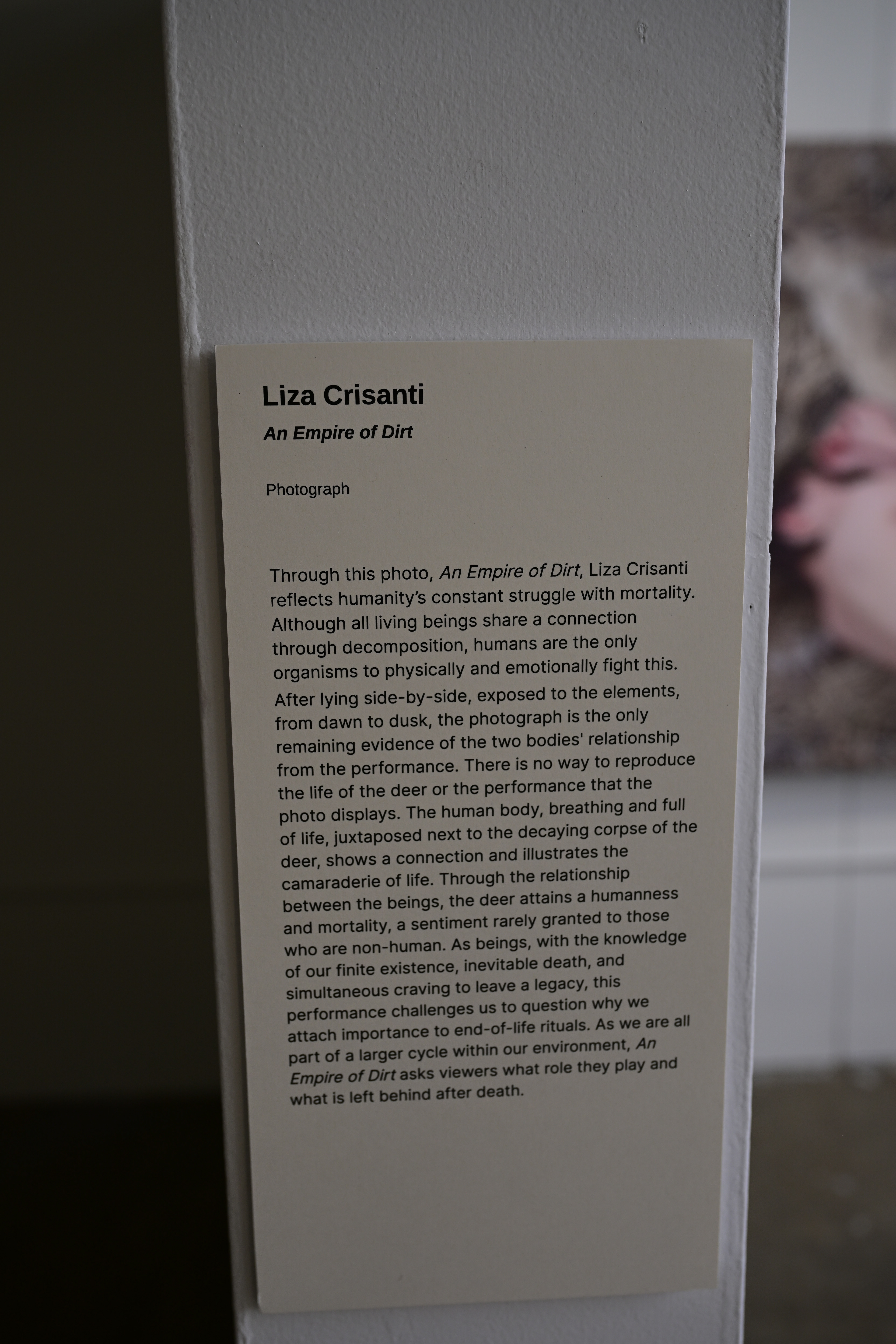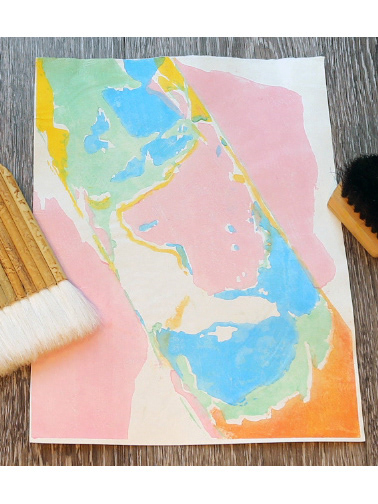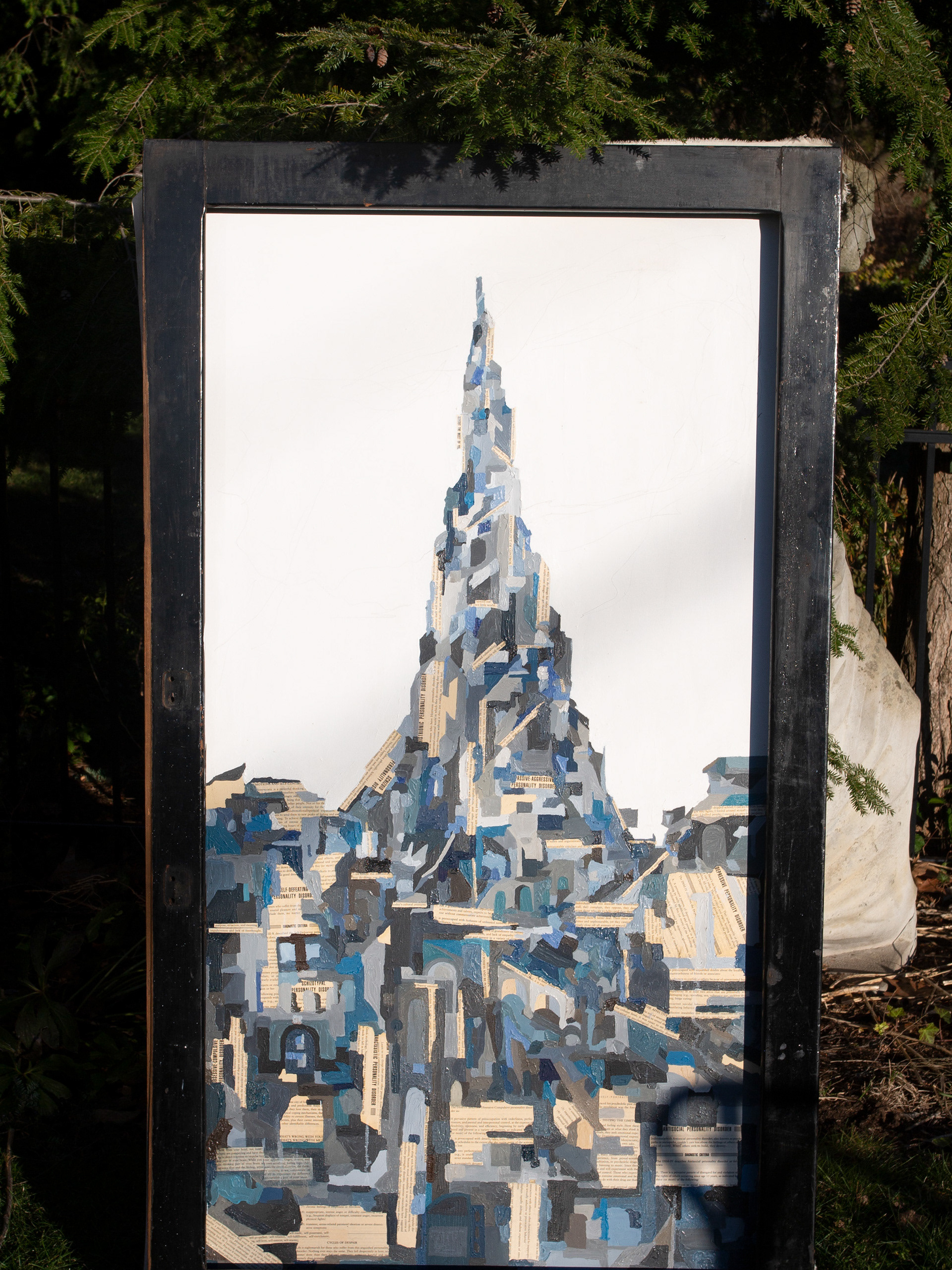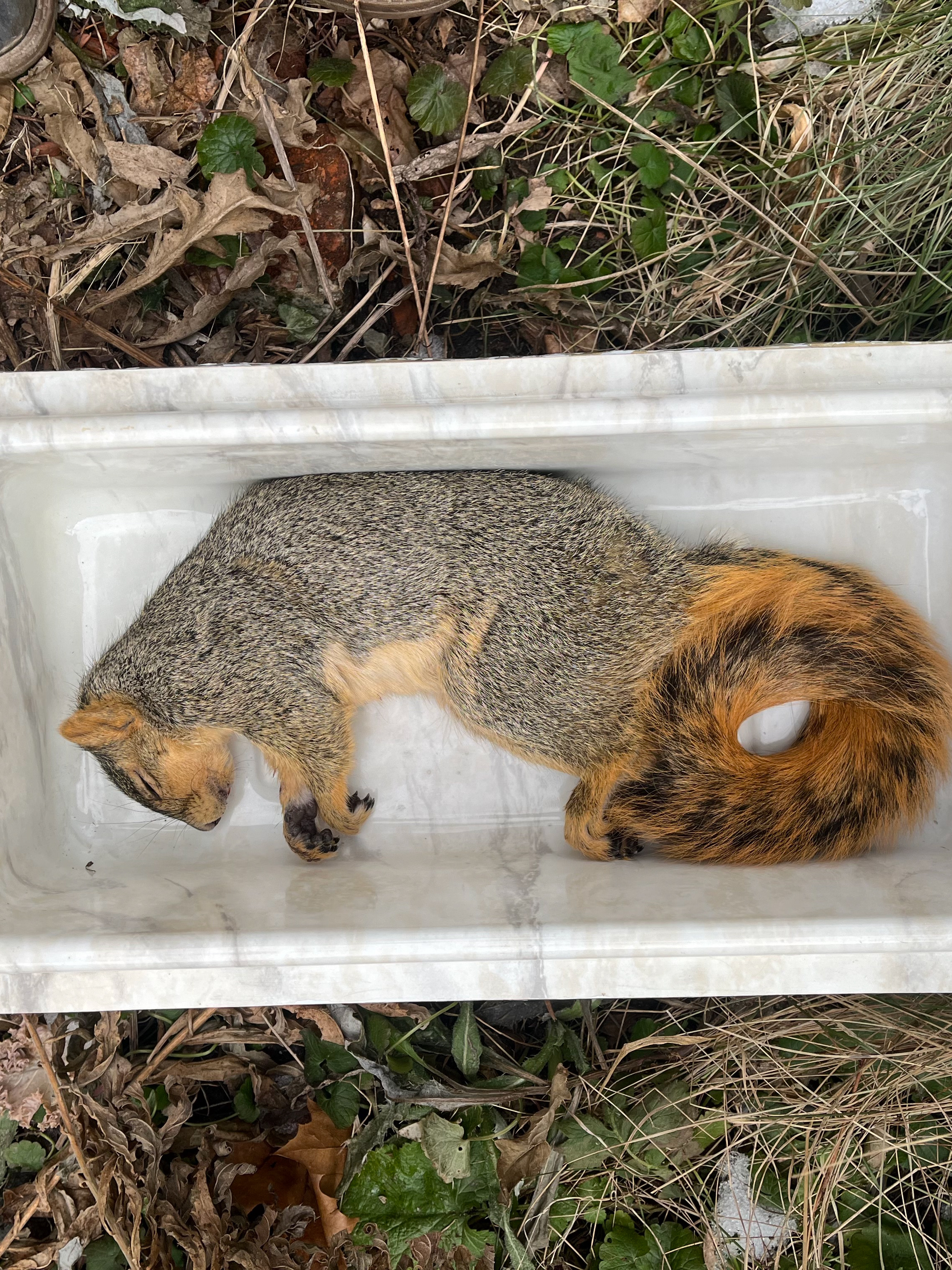Performance/Installation
Project Statment
A projection of all of humanity's constant struggle with mortality and the doubts of our daily lives through one photo.
Although all living beings share a connection through decomposition, humans are the only organisms to physically and emotionally fight in such an unnatural way. After lying side-by-side, exposed to the elements, from dawn to dusk, the photograph is the only remaining evidence of the two bodies' relationship from the performance. There is no way to reproduce the life of the deer or the performance the photo displays. The human body, breathing and full of life, juxtaposed next to the decaying corpse of the deer, shows a connection that illustrates the camaraderie of life. Through the relationship between beings, the deer attains humanness and mortality, a sentiment rarely granted to those who are non-human. As being, with the knowledge of finite existence, inevitable death, and simultaneous craving to leave a legacy, this performance challenges us to question why we attach importance to end-of-life rituals. As we are all part of a larger cycle within our environment, An Empire of Dirt asks viewers what role they play and what is left behind after death.
Although all living beings share a connection through decomposition, humans are the only organisms to physically and emotionally fight in such an unnatural way. After lying side-by-side, exposed to the elements, from dawn to dusk, the photograph is the only remaining evidence of the two bodies' relationship from the performance. There is no way to reproduce the life of the deer or the performance the photo displays. The human body, breathing and full of life, juxtaposed next to the decaying corpse of the deer, shows a connection that illustrates the camaraderie of life. Through the relationship between beings, the deer attains humanness and mortality, a sentiment rarely granted to those who are non-human. As being, with the knowledge of finite existence, inevitable death, and simultaneous craving to leave a legacy, this performance challenges us to question why we attach importance to end-of-life rituals. As we are all part of a larger cycle within our environment, An Empire of Dirt asks viewers what role they play and what is left behind after death.
Performance Process
Date of performance March 24, 2022. 7:15 am arrival, foggy with low visibility. The temperature throughout the day: low of 24 degrees, high of 64.
Arriving at dawn, with everything foggy I was delayed due to my truck getting stuck in mud. Some kind passersby pulled me out on their way to work. Being surrounded by nature so early in the morning I was surprised how busy it was with turkeys and deer everywhere.
Throughout the performance, I was not worried about staying awake so much as tensing and releasing my muscles periodically so they would not fall asleep. My goal was to limit the number of times I got up.
Going to the bathroom was unavoidable, but I did it fast, adding an additional emotional element to the piece. Feeling the hunger pangs made me more aware of my body and kept me from falling asleep. The cold also was acute but wore down as the hours went by. I had been worried about hypothermia however when I began to lose feeling in my toes I took short breaks in my car wrapped in a blanket.
Going to the bathroom was unavoidable, but I did it fast, adding an additional emotional element to the piece. Feeling the hunger pangs made me more aware of my body and kept me from falling asleep. The cold also was acute but wore down as the hours went by. I had been worried about hypothermia however when I began to lose feeling in my toes I took short breaks in my car wrapped in a blanket.
At one point I covered the deer and myself in a blanket, staying outside and sharing warmth. I hoped that I would warm the deer, but with the deer having been dead for so long, the cold just seeped to me and I had to wrap the blanket around my nude body solely.
I decided to finish before it got dark, however, I did not feel like I would have fully committed to the piece unless I stayed with the deer until after sunset. I walked around a bit and lay with her clothed. Although I thought sunrise took a lot longer, evening still felt like forever. There was no time I could say it was completely set so I made the decision myself. I wish I had arrived when it was as dark as when I left. I ended up leaving at 7:10 and coming back after complete darkness to say goodbye once more. Complete darkness felt like a completely different atmosphere.
I decided to finish before it got dark, however, I did not feel like I would have fully committed to the piece unless I stayed with the deer until after sunset. I walked around a bit and lay with her clothed. Although I thought sunrise took a lot longer, evening still felt like forever. There was no time I could say it was completely set so I made the decision myself. I wish I had arrived when it was as dark as when I left. I ended up leaving at 7:10 and coming back after complete darkness to say goodbye once more. Complete darkness felt like a completely different atmosphere.
Installation Images
The goal of the installation was to not recreate the performance but to give viewers a sense of what transpired. The image was meant to be a powerful reminder of mortality and death but only a piece of the whole performance which was Empire of Dirt. By only showing the photograph, and having no one witness the performance, the piece took on a more ritualistic sense and gained a sentience that a live audience would have not afforded.
The large text was meant to overwhelm the viewer while giving a glimpse into the feelings experienced during the performance. The large scale was a reflection of the performance and meaning behind life-sized. With the image being life-sized, viewers were not able to look away from the facts of the image and the themes of death it presented. Including writing in the piece shows the importance of process throughout the research portion.




Writing
No matter where in the world one is, the act of living and dying is an unescapable finality for us all. Not only does our death bind us, but the ‘kaleidoscope’ of emotional and social dynamics one faces during others’ death unites us. Through exploring the development of mortal salience, and the human resistance to the circle of life my piece illustrates the sentiment and fear we face of fading away through death. By binding my living body to that of a decaying animal, the form becomes humanized and seen once again as it once was, a living creature, rather than just an object or ‘roadkill’. Through the immersive nature of the piece, viewers will gain a sense of connectedness to other living creatures who share their origin and fate. The decomposing bodies of animals, placed on the floor atop pedestals bring an uncomfortable subject into an unnatural environment. While not actively mourning a loss but faced with such aggressive imagery, one is forced to consider an inevitably that most of us are never able to accept. By connecting to the environment and the post-death process, the piece will question society’s view of death and traditional definitions of natural beauty.
Unanswered
Why is it that when a loved one dies; we mourn the way we do, pain is considered a universal language, and yet we all grieve in drastically different ways. Physical pain is something that we have been able to measure in recent years with new technological developments, however, emotional pain and trauma is immeasurable. We are often comforted by others' empathy and speaking of similar experiences, and yet no two people will ever experience the same emotional pain. How can I express a way for us all to universally connect our emotional pain of grief through artwork? We all experience loss so should it connect us rather than drive us into isolation?










